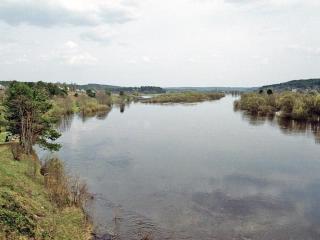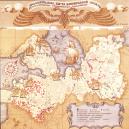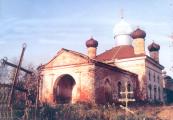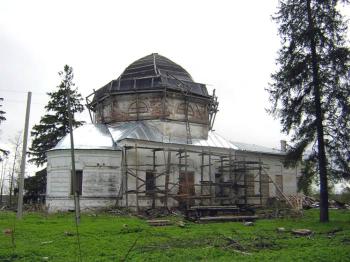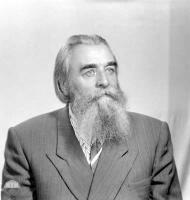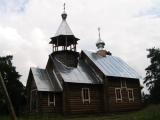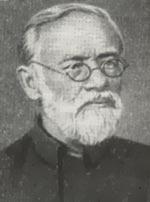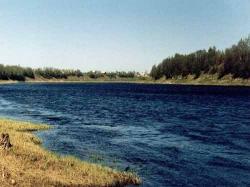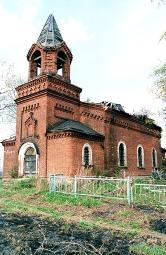Articles
/
Kurgans (barrows) of the southern Ladoga Lake region.
Kurgans (barrows) of the southern Ladoga Lake region.
Subject /
Relics
Subject /
Ethnic culture/Ethnic communities/
Subject /
Ethnic culture//
Kurgans (barrows, burial mounds) of the southern Ladoga Lake region (the late 9th - early 13th centuries) pertain to so-called the Lake Ladoga region Chuds whose descendants took part in forming Vepses and Karels. They were likely to be "kolbyagi", mixed Finnish and Scandinavian population, given military detachments for prince compaigns. Barrows were researched by D. Evropeus, N.E. Brandenburg, V.I. Ravdonikas, A.M. Linevsky, S.I. Kochkurkina, V.A. Nazarenko and others from the second half of the 19th century. More then 600 mounds were excavated in 140 burial grounds located on the banks of the Pasha, Syas, Tikhvinka, Oyat, Svir rivers and their tributaries. They differed from old Russian barrows. The heart of funeral ritual is the idea of the afterlife dwelling with a hearth in the centre. The dwelling is devided into male's (eastern) and female's (western) halves. Firstly the deceaseds were cremated, the ritual of corpse-layout appeared in the 11th century. A set of funeral kitchen utensils (a copper, pots, iron frying pans) and a spade for sweeping the coal were set on the hearth. Both simultaneous burials, when a woman was killed for escorting a man to the next world, and burials taking place at different times were found. Male burials were sometimes escorted by burials of horses and cut off human heads. Rich household equipment (arms, horse gear, work and hunting equipment, everyday life things, pots and pans, decorations) were put into burial mounds. Arms were gone bad. After ending the rirual the purifying fire was kindled in the ditch around the burial. The barrow ritual advent was triggered off by the Mound Culture influence and the the advert of the Scandinavians among the local Baltic and Finnish population. Scandinavians were middlemen in the exchange of the fur for arms and decorations. The centre of the new community was formed at the junction of the Pasha River and the Syazniga River (a fortified settlement at the Gorodishche Village). Connections with neighbouring Ladoga played the important role. In the 12th - the early 13th centuries single burials, where the deceased was put in the grave and oriented with the head to the West (it is typical for old Russian rural population), were spread in all places.
Authors
Plotkin, Konstantin Moiseyevich
Persons
Brandenburg, Nikolay Yefimovich
Europeus, Daniel
Kochkurkina, Svetlana Ivanovna
Linevsky, Aleksandr Mikhaylovich
Nazarenko, Vladimir Aleksandrovich
Ravdonikas, Vladislav Iosifovich
Geography
Historical Toponyms/Ladoga
Topographical landmarks/Oyat River, the
Topographical landmarks/Pasha River, the
Topographical landmarks/Svir River, the
Topographical landmarks/Syas River, the
Topographical landmarks/Syazniga River, the
Topographical landmarks/Tikhvinka River, the
Bibliography
Кочкуркина С.И. Юго-Восточное Приладожье в X-XIII вв. Л., 1973
Мачинский Д.А. Колбяги «Русской правды» и приладожская курганная культура // Тихвинский сборник. Вып. 1: Археология Тихвинского края. Тихвин, 1989
Назаренко В.А. Приладожская чудь // Финны в Европе. Вып. 2. М., 1990., С.82-93
Subject Index
Chud, see Vod
Karelians
Veps
Mentioned in articles:
|
hidden
|
Alyokhovshchina, village
ALYOKHOVSCHINA, a village in Lodeynoye Pole District. Population: 1882. It is situated on the banks of the Oyat River. It is situated at the crossing of motor roads to Lodeynoye Pole, Tikhvin, Domozhirovo, and Yaroslavichi. The name originates from... more
|
|
|
|
hidden
|
Archaeological monuments
Archaeological monuments of the Leningrad Oblast are settlements, grads, burial grounds, religious objects and other material trails of the past. Settling the oblast territory took place during the Mesolithic period. The age of the most ancient... more
|
|
|
|
hidden
|
Astracha, village
ASTRACHA, a village in Boksitogorsk District. Population: 48. It situated on the left bank of the Tikhvinka River, at the Novaya Ladoga-Yaroslavl Highway, 3 km north-west of the railway station of the same name. The name originates from the... more
|
|
|
|
hidden
|
Gorka, village
GORKA, a village in Tikhvin District. Population: 813. It is located near a dry wash, at a bend of the Pasha River. It is connected to Tikhvin and localities in the district’s north-western part by a motor road. The name indicates the position of... more
|
|
|
|
hidden
|
Oyat River, the
OYAT, river, left-hand tributary of the Svir River. Length: 266 km. The average flow rate in the mouth is 54.8 cu. m/s, catchment area: 5220 sq. km. Its source is Lake Chaimozero on the Veps Hills (in Vologda Oblast, 7 km away from the Leningrad... more
|
|
|
|
hidden
|
Ozeryovo, village
OZERYOVO, a village in Boksitogorsk District. Located on the left bank of the Chagoda River that floods at that point forming a kind of lake (origin of the village’s name.) Population: 22. The Zabelino-Krasnaya Rechka motor road extends close to O.,... more
|
|
|
|
hidden
|
Pasha River, the
PASHA, river, left-hand tributary of the Svir River. Length: 242 km. The average flow rate in the mouth is 69.2 cu. m/s, catchment area: 6650 sq. km. It flows out of Lake Pashozero in the east of Leningrad Oblast, and crosses Tikhvin and Volkhov... more
|
|
|
|
hidden
|
Pasha, village
PASHA, a village in Volkhov District. Population: 3805. Before the 1980s, it was called Pashsky Perevoz [Pasha Ferry] after the ferry crossing over the Pasha River. It is connected to the neighboring localities and the district center by a highway... more
|
|
|
hidden
|
Ravdonikas, Vladislav Iosifovich (1894-1976), a scientist
Ravdonikas, Vladislav Iosifovich (1894, Tikhvin - 1976), an archaeologist, Corresponding Member of the Academy of Science of the USSR (1946). In the middle of the 1910s Ravdonikas has been keen on archaelogical dig of burial mounds of the Tikhvin... more
|
|
|
|
hidden
|
Shugozero, settlement
SHUGOZERO, a settlement in Tikhvin District. Population: 2423. Located on the southern shore of Lake Sredneye. The name originates from the neighboring large lake, Shugozero. The settlement is connected by a motor road to Tikhvin Town and localities... more
|
|
|
|
hidden
|
Spitsin, Aleksandr Andreyevich (1858-1931), a scientist
Spitsin, Aleksandr Andreyevich (1858-1931), an archaeologist, Corresponding Member of the Academy of Scienses (1927). He graduated from the St. Petersburg University in 1882. From 1892 Spitsin worked at the Archaeology Committee (the Committee was... more
|
|
|
|
hidden
|
Syas River, the
SYAS, a river in the south-eastern Priladozhye. Length: 260 km, of which, abt. 190 km within Leningrad Oblast. The average flow rate is 61.6 cu. m/s, and the catchment area, 7330 sq. km. It originates in the north-east of Novgorod Oblast, 6 km... more
|
|
|
|
hidden
|
Volkhov District
VOLKHOV DISTRICT, a part of Leningrad Oblast. Area: 5124 sq. km, population: 97,300. Established in 1927. Adm. center: Volkhov Town. V. D. comprises the towns of Syasstroy and Novaya Ladoga, and 277 rural localities. Located south of Lake Ladoga on... more
|
|
|
|





